Shows
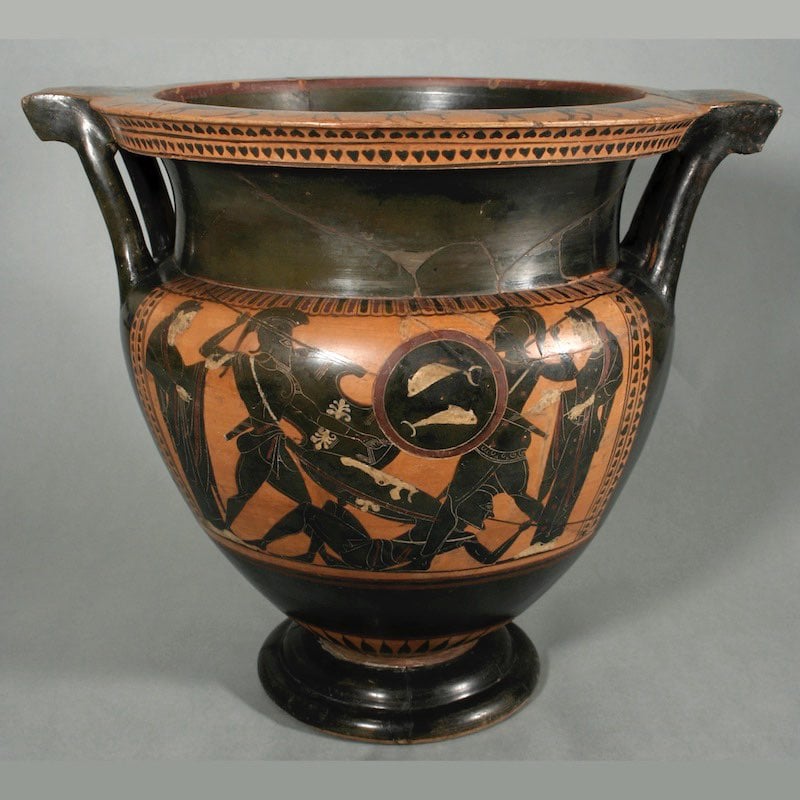 Museum MinuteBlack Figure Column Krater
This krater is highly decorated with both designs and figural groupings in the Black Figure technique. It is a complicated process, but put simply, the main decorative elements and figures are painted with a slip that turns black in the firing process. On one side, a wedding scene is painted with bride and groom in a four-horse chariot, accompanied by two women attendants and a musician playing a lyre. One of the attendants holds a torch. The other side has a battle scene, two warriors fight over the body of a fallen third. Again, two female attendants...2021-06-1002 min
Museum MinuteBlack Figure Column Krater
This krater is highly decorated with both designs and figural groupings in the Black Figure technique. It is a complicated process, but put simply, the main decorative elements and figures are painted with a slip that turns black in the firing process. On one side, a wedding scene is painted with bride and groom in a four-horse chariot, accompanied by two women attendants and a musician playing a lyre. One of the attendants holds a torch. The other side has a battle scene, two warriors fight over the body of a fallen third. Again, two female attendants...2021-06-1002 min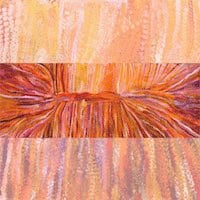 Museum MinuteMy Country by Emily Kame Kngwarreye
Emily Kame Kngwarreye was one of the first celebrated female Aboriginal Australian Desert Painters. Entering the national art market well into her seventies, Kngwarreye paved the way for female Aboriginal artists to express women's specific cultural relationship to the Dreaming and their ancestral lands. In My County, Kngwarreye uses a vibrantly colored dotting technique, popularized in Papunya. While only she knows the true stories and secrets that lay hidden within the canvas, all viewers can appreciate My Country for its immensely beautiful and imposing presence.
Emily Kame Kngwarreye
Indigenous Australian, b. 1910
My Country, 1994
Acrylic on...2021-05-2002 min
Museum MinuteMy Country by Emily Kame Kngwarreye
Emily Kame Kngwarreye was one of the first celebrated female Aboriginal Australian Desert Painters. Entering the national art market well into her seventies, Kngwarreye paved the way for female Aboriginal artists to express women's specific cultural relationship to the Dreaming and their ancestral lands. In My County, Kngwarreye uses a vibrantly colored dotting technique, popularized in Papunya. While only she knows the true stories and secrets that lay hidden within the canvas, all viewers can appreciate My Country for its immensely beautiful and imposing presence.
Emily Kame Kngwarreye
Indigenous Australian, b. 1910
My Country, 1994
Acrylic on...2021-05-2002 min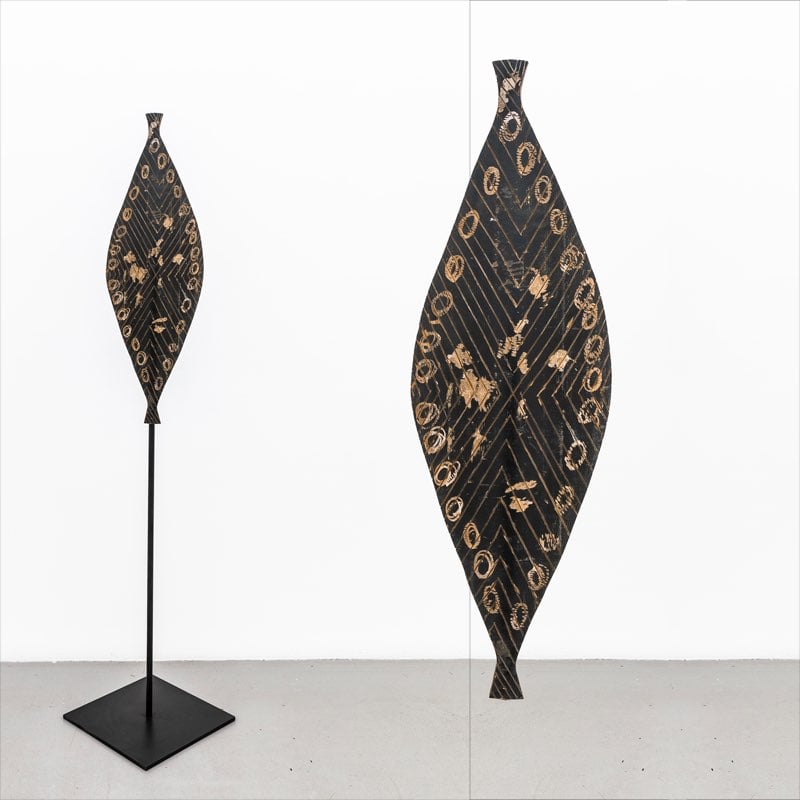 Museum MinuteNullius in Verba III by Steaphan Paton
Standing at six feet tall, the sculpture “Nullius in Verba III” is intentionally the same height and weight as its sculptor, Steaphan Paton. The metal, diamond-shaped shield, mounted on a long pole, confronts the viewer. The shield’s surface is scratched, evoking the centuries of violence and dispossession faced by Paton’s ancestors. Among closer inspection, however, the sculpture is made from modern materials, asserting that this violence against Indigenous Australians is not an historic anecdote but a contemporary issue.
Steaphan Paton
Gunai and Monaro-Ngarigo language groups, Indigenous Australian, b. 1985
Nullius in Verba III, 2019
Etched steel, acrylic paint, nan...2021-05-1302 min
Museum MinuteNullius in Verba III by Steaphan Paton
Standing at six feet tall, the sculpture “Nullius in Verba III” is intentionally the same height and weight as its sculptor, Steaphan Paton. The metal, diamond-shaped shield, mounted on a long pole, confronts the viewer. The shield’s surface is scratched, evoking the centuries of violence and dispossession faced by Paton’s ancestors. Among closer inspection, however, the sculpture is made from modern materials, asserting that this violence against Indigenous Australians is not an historic anecdote but a contemporary issue.
Steaphan Paton
Gunai and Monaro-Ngarigo language groups, Indigenous Australian, b. 1985
Nullius in Verba III, 2019
Etched steel, acrylic paint, nan...2021-05-1302 min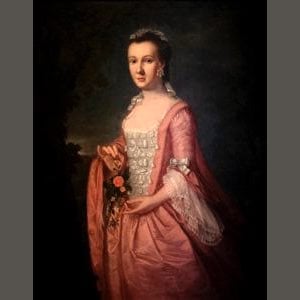 Museum MinutePortrait of Miss Rhoda Cranston by John Singleton Copley
Miss Rhoda Cranston looks out of her portrait and slightly to her left. Painted by John Singleton Copley around 1756, we see the artist relying on current English traditions of portraiture to establish the status of his subject. Copley studied contemporary portraits in England and Europe available to him in Boston through prints and is learning from them trends in both placement and background as well as the necessity of outfitting his sitters in the latest fashions.
John Singleton Copley
American, 1738-1815
Portrait of Miss Rhoda Cranston, 1756-58
Oil on canvas, 50 x 40 inches
Gift of Mrs...2021-05-0602 min
Museum MinutePortrait of Miss Rhoda Cranston by John Singleton Copley
Miss Rhoda Cranston looks out of her portrait and slightly to her left. Painted by John Singleton Copley around 1756, we see the artist relying on current English traditions of portraiture to establish the status of his subject. Copley studied contemporary portraits in England and Europe available to him in Boston through prints and is learning from them trends in both placement and background as well as the necessity of outfitting his sitters in the latest fashions.
John Singleton Copley
American, 1738-1815
Portrait of Miss Rhoda Cranston, 1756-58
Oil on canvas, 50 x 40 inches
Gift of Mrs...2021-05-0602 min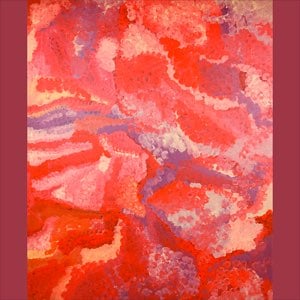 Museum MinuteAwely by Emily Kame Kngwarreye
In deep reds, pinks, and yellows, Emily Kame Kngwarreye's "Awely" is an embodiment of her connection with her Country. Kngwarreye began painting late in her life, when she was already an elder in her community, Utopia, in Australia’s Northern Territory. The artwork’s title refers to women’s ceremonial knowledge of song, dance, medicine, and designs painted on the body. As Kngwarreye applied heavy blotches of paint to her canvases, she would sing ceremonial songs, replicating the act of painting on skin. In this way, “Awely” is both a painting of Kngwarreye’s homeplace and a conversation...2021-04-2902 min
Museum MinuteAwely by Emily Kame Kngwarreye
In deep reds, pinks, and yellows, Emily Kame Kngwarreye's "Awely" is an embodiment of her connection with her Country. Kngwarreye began painting late in her life, when she was already an elder in her community, Utopia, in Australia’s Northern Territory. The artwork’s title refers to women’s ceremonial knowledge of song, dance, medicine, and designs painted on the body. As Kngwarreye applied heavy blotches of paint to her canvases, she would sing ceremonial songs, replicating the act of painting on skin. In this way, “Awely” is both a painting of Kngwarreye’s homeplace and a conversation...2021-04-2902 min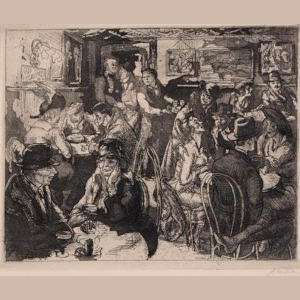 Museum MinuteHell Hole by John Sloan
John Sloan
American, 1871-1951
Hell Hole, 1917
Etching and aquatint, 10/10
9 7/16 x 12 3/8 inches
Museum Purchase, 1977.5
© Estate of John Sloan/Artists Rights Society (ARS), New York
Hell Hole is a 1917 etching by the American Artist, John Sloan. We see the cramped, claustrophobic interior of bustling bar. We know this is the Golden Swan, frequently referred to by its regulars as the Hell Hole, hence the title of the print.
Located at West 4th and 6th Avenue in New York City’s Greenwich Village, the Golden Swan was frequented by both working class patrons and the artists for...2021-02-1801 min
Museum MinuteHell Hole by John Sloan
John Sloan
American, 1871-1951
Hell Hole, 1917
Etching and aquatint, 10/10
9 7/16 x 12 3/8 inches
Museum Purchase, 1977.5
© Estate of John Sloan/Artists Rights Society (ARS), New York
Hell Hole is a 1917 etching by the American Artist, John Sloan. We see the cramped, claustrophobic interior of bustling bar. We know this is the Golden Swan, frequently referred to by its regulars as the Hell Hole, hence the title of the print.
Located at West 4th and 6th Avenue in New York City’s Greenwich Village, the Golden Swan was frequented by both working class patrons and the artists for...2021-02-1801 min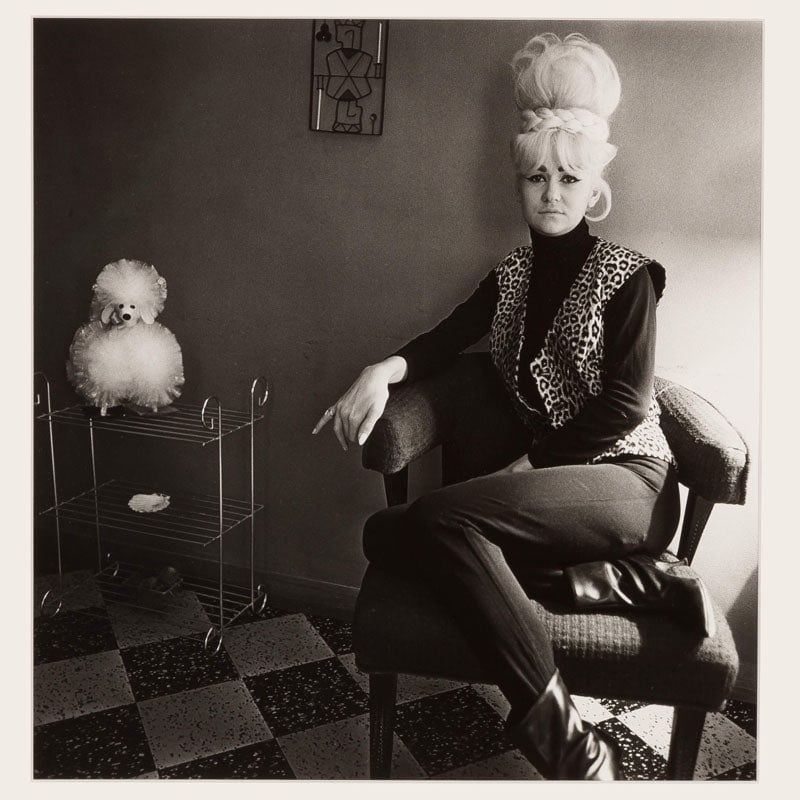 Museum MinuteLady Bartender At Home with Souvenir Dog by Diane Arbus
Diane Arbus
American, 1923-1971
Lady Bartender At Home with Souvenir Dog, New Orleans, 1964
Gelatin silver print, 7 7/8 x 7 1/8 in. (20 x 18.1 cm)
Museum purchase with the Curriculum Support Fund, 1988.7
© Estate of Diane Arbus | Fraenkel Gallery (San Francisco, CA)
A woman wearing a leopard print vest, black turtleneck, and black pants is seated with one leg bent under her on a chair; she has on black, high heel boots. She looks forward, out of the photograph, but not quite directly at the viewer. What is most striking about her appearance, is her hair. A high, teased white blond bouffant, bisected by a...2021-01-2802 min
Museum MinuteLady Bartender At Home with Souvenir Dog by Diane Arbus
Diane Arbus
American, 1923-1971
Lady Bartender At Home with Souvenir Dog, New Orleans, 1964
Gelatin silver print, 7 7/8 x 7 1/8 in. (20 x 18.1 cm)
Museum purchase with the Curriculum Support Fund, 1988.7
© Estate of Diane Arbus | Fraenkel Gallery (San Francisco, CA)
A woman wearing a leopard print vest, black turtleneck, and black pants is seated with one leg bent under her on a chair; she has on black, high heel boots. She looks forward, out of the photograph, but not quite directly at the viewer. What is most striking about her appearance, is her hair. A high, teased white blond bouffant, bisected by a...2021-01-2802 min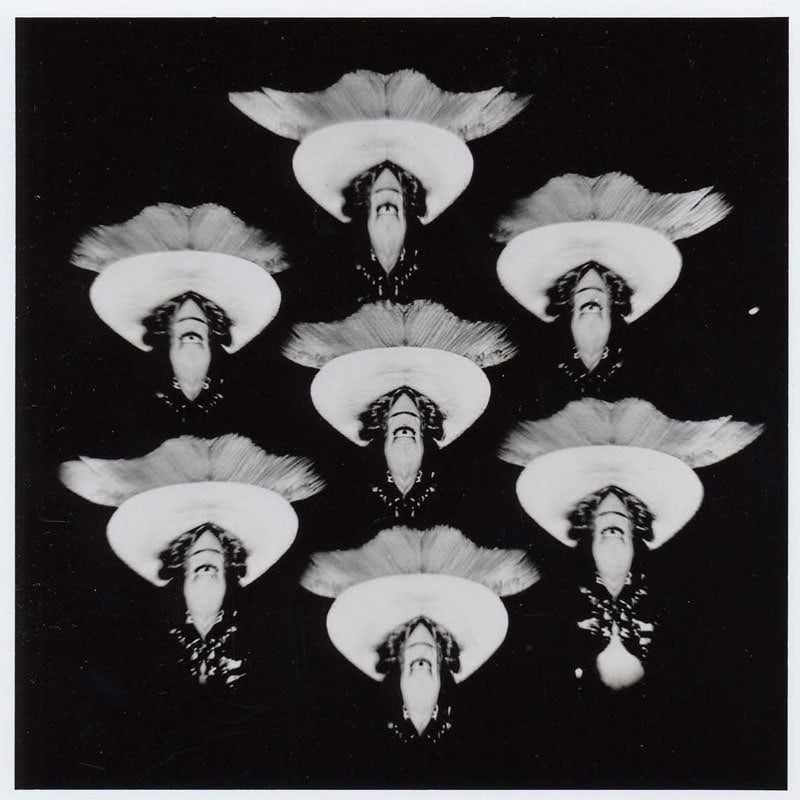 Museum MinuteUntitled (Hedda Hopper, Distortion) by WeegeeEpisode Notes
This photograph of gossip columnist Hedda Hopper by Weegee is an example of what he called his distortions. After working as a photojournalist in the gritty Lower East Side of Manhattan in the 1930s and ‘40s, he moved to Hollywood where he began photographing celebrities and experimenting with dark room techniques.
Arthur Fellig, known as Weegee
American, born Ukraine, 1899-1968
Untitled (Hedda Hopper, Distortion)
ca. 1950
Gelatin Silver Print
1995.30.65
Gift of Dr. Revels Cayton
ÓWeegee (Arthur Fellig)/International Center of Photography/Getty Images2020-12-1502 min
Museum MinuteUntitled (Hedda Hopper, Distortion) by WeegeeEpisode Notes
This photograph of gossip columnist Hedda Hopper by Weegee is an example of what he called his distortions. After working as a photojournalist in the gritty Lower East Side of Manhattan in the 1930s and ‘40s, he moved to Hollywood where he began photographing celebrities and experimenting with dark room techniques.
Arthur Fellig, known as Weegee
American, born Ukraine, 1899-1968
Untitled (Hedda Hopper, Distortion)
ca. 1950
Gelatin Silver Print
1995.30.65
Gift of Dr. Revels Cayton
ÓWeegee (Arthur Fellig)/International Center of Photography/Getty Images2020-12-1502 min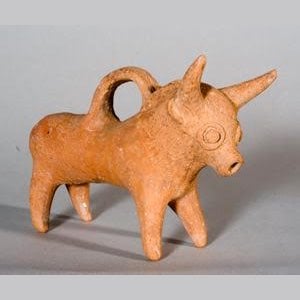 Museum MinuteCypriot Base Ring II Bull RhytonEpisode Notes
Though small, this Cypriot rhyton in the form of a bull has a lot of personality. He’s a favorite with many visitors to The Fralin Museum of Art, particularly our UVA students. A rhyton is a vessel, usually with an animal head or, in this case, a depiction of a whole animal, that is meant to hold liquid for drinking or pouring. This may have been used in funerary rites or in acts of commemoration.
Cypriot Artist
Base Ring II Bull Rhyton, ca. 1475 BCE - 1225 BCE
Terracotta
3 1/8 x 2 x 4 1/8 in. (8 x 5.1 x 10.5 cm)
Gift of Ho...2020-12-1502 min
Museum MinuteCypriot Base Ring II Bull RhytonEpisode Notes
Though small, this Cypriot rhyton in the form of a bull has a lot of personality. He’s a favorite with many visitors to The Fralin Museum of Art, particularly our UVA students. A rhyton is a vessel, usually with an animal head or, in this case, a depiction of a whole animal, that is meant to hold liquid for drinking or pouring. This may have been used in funerary rites or in acts of commemoration.
Cypriot Artist
Base Ring II Bull Rhyton, ca. 1475 BCE - 1225 BCE
Terracotta
3 1/8 x 2 x 4 1/8 in. (8 x 5.1 x 10.5 cm)
Gift of Ho...2020-12-1502 min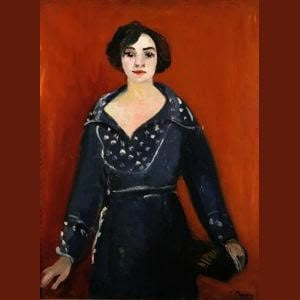 Museum MinuteSelf-Portrait with an Album by Émilie CharmyEpisode Notes
This powerful self-portrait in The Fralin Museum of Art’s collection is by the French artist, Émilie Charmy. She was influenced by Post-Impressionism and acquainted with the Fauves, both clearly evidenced in her compositional structure, passages of loose brushwork, and choice of strong colors.
Émilie Charmy
French, 1878 - 1974
Self-Portrait with an Album, ca. 1907 - 1912
Oil on canvas
45 3/4 x 35 1/16 in. (116.2 x 89.1 cm)
Gift of Pamela K. and William A. Royall, Jr.
2011.17.2
©Artists Rights Society (ARS), New York / ADAGP, Paris2020-12-1501 min
Museum MinuteSelf-Portrait with an Album by Émilie CharmyEpisode Notes
This powerful self-portrait in The Fralin Museum of Art’s collection is by the French artist, Émilie Charmy. She was influenced by Post-Impressionism and acquainted with the Fauves, both clearly evidenced in her compositional structure, passages of loose brushwork, and choice of strong colors.
Émilie Charmy
French, 1878 - 1974
Self-Portrait with an Album, ca. 1907 - 1912
Oil on canvas
45 3/4 x 35 1/16 in. (116.2 x 89.1 cm)
Gift of Pamela K. and William A. Royall, Jr.
2011.17.2
©Artists Rights Society (ARS), New York / ADAGP, Paris2020-12-1501 min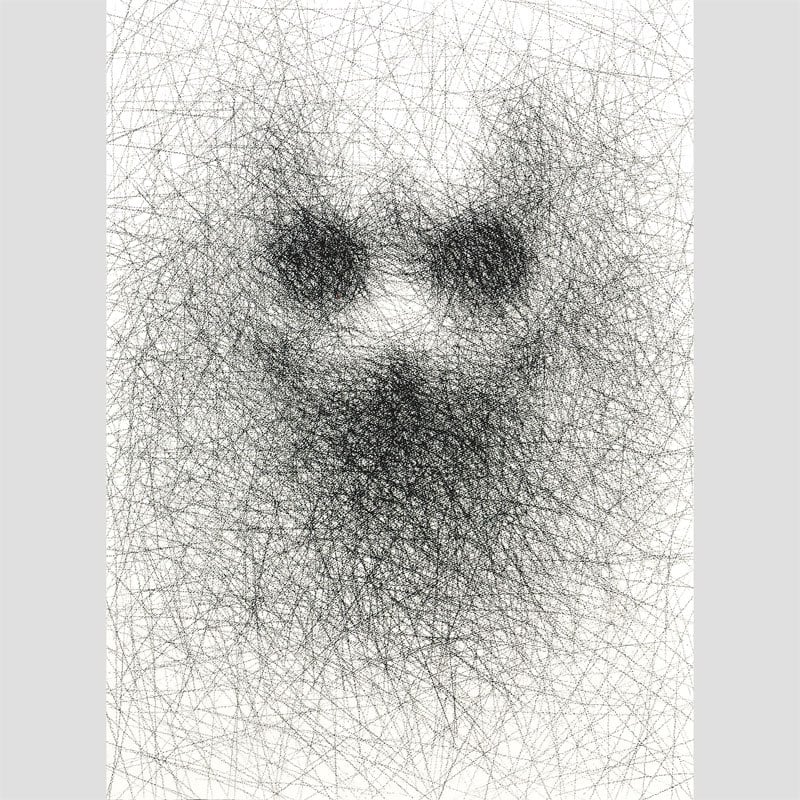 Museum MinuteUnwritten by Vernon Ah KeeEpisode Notes
A solitary figure emerges from an urgent flurry of charcoal lines. Vernon Ah Kee’s “Unwritten” is a potent metaphor for the struggle of indigenous artists to control their identities amid the continuing pressures of racism and colonial oppression. In 2004, Ah Kee began a series of large scale photorealistic charcoal portraits of his family members. These works were based upon ethnographic photos taken by the anthropologist Norman Tyndale on Palm Island during the 1930s. In enlarging these images to an imposing scale, Ah Kee returns power to their gaze, reclaiming the ethnographic photography for those who ar...2020-12-1402 min
Museum MinuteUnwritten by Vernon Ah KeeEpisode Notes
A solitary figure emerges from an urgent flurry of charcoal lines. Vernon Ah Kee’s “Unwritten” is a potent metaphor for the struggle of indigenous artists to control their identities amid the continuing pressures of racism and colonial oppression. In 2004, Ah Kee began a series of large scale photorealistic charcoal portraits of his family members. These works were based upon ethnographic photos taken by the anthropologist Norman Tyndale on Palm Island during the 1930s. In enlarging these images to an imposing scale, Ah Kee returns power to their gaze, reclaiming the ethnographic photography for those who ar...2020-12-1402 min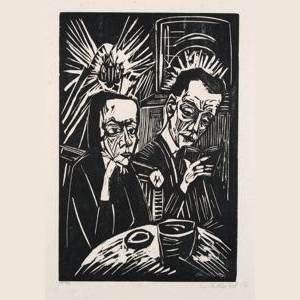 Museum MinuteReading Aloud (Beim Vorlesen) by Erich HeckelMatthew McLendon is looking at one of his favorite prints in The Fralin Museum of Art’s collection. It’s a woodcut by the German Expressionist artist, Erich Heckel. The title of the print is Reading Aloud (Beim Vorlesen) and it was made in 1914. We know who the figures are. The woman, right hand resting under her chin, elbow on the table, is Erich Heckel’s companion and later wife, the dancer Sidi Riha. She sits shoulder to shoulder with art historian Walter Kasebach, a great advocate for the Die Brücke Artists.Erich Heckel German, 1883-1970 Reading...2020-10-2202 min
Museum MinuteReading Aloud (Beim Vorlesen) by Erich HeckelMatthew McLendon is looking at one of his favorite prints in The Fralin Museum of Art’s collection. It’s a woodcut by the German Expressionist artist, Erich Heckel. The title of the print is Reading Aloud (Beim Vorlesen) and it was made in 1914. We know who the figures are. The woman, right hand resting under her chin, elbow on the table, is Erich Heckel’s companion and later wife, the dancer Sidi Riha. She sits shoulder to shoulder with art historian Walter Kasebach, a great advocate for the Die Brücke Artists.Erich Heckel German, 1883-1970 Reading...2020-10-2202 min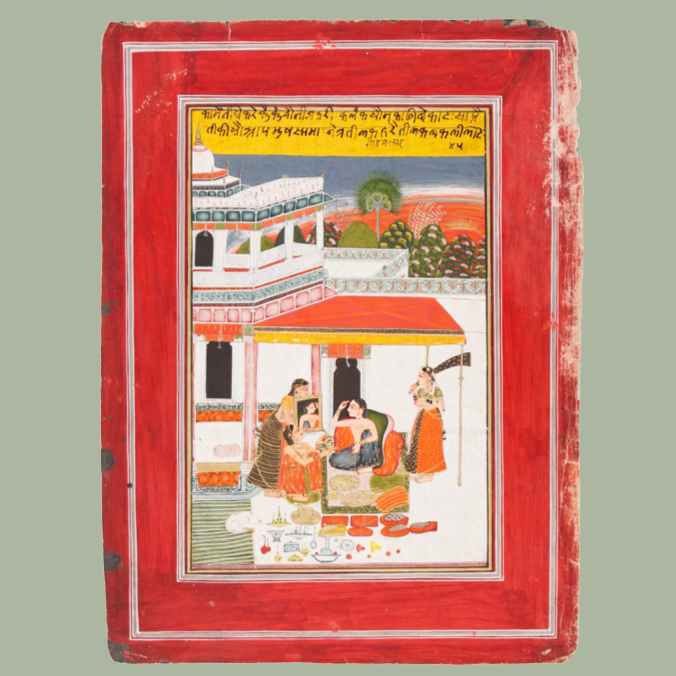 Museum MinuteRukmini Adorning Herself Preparing to go to the TempleThe Fralin Museum of Art has a strong collection of Indian Painting due to the efforts and long dedication to the museum of Prof. Dan Ehnbom, who is one of the leading specialists in South Asian Painting. Matthew McLendon discusses one of his favorite works from this part of the collection, a leaf from a Rukmini-haran (Abduction of Rukmini) series: Rukmini Adorning Herself Preparing to go to the Temple, ca. 1700-1710 CE.Leaf from a Rukmini-haran (Abduction of Rukmini) series: Rukmini Adorning Herself Preparing to go to the Temple India, Rajasthan, Kota, ca. 1700 – 1710 CE Ink, opaque color, an...2020-10-2202 min
Museum MinuteRukmini Adorning Herself Preparing to go to the TempleThe Fralin Museum of Art has a strong collection of Indian Painting due to the efforts and long dedication to the museum of Prof. Dan Ehnbom, who is one of the leading specialists in South Asian Painting. Matthew McLendon discusses one of his favorite works from this part of the collection, a leaf from a Rukmini-haran (Abduction of Rukmini) series: Rukmini Adorning Herself Preparing to go to the Temple, ca. 1700-1710 CE.Leaf from a Rukmini-haran (Abduction of Rukmini) series: Rukmini Adorning Herself Preparing to go to the Temple India, Rajasthan, Kota, ca. 1700 – 1710 CE Ink, opaque color, an...2020-10-2202 min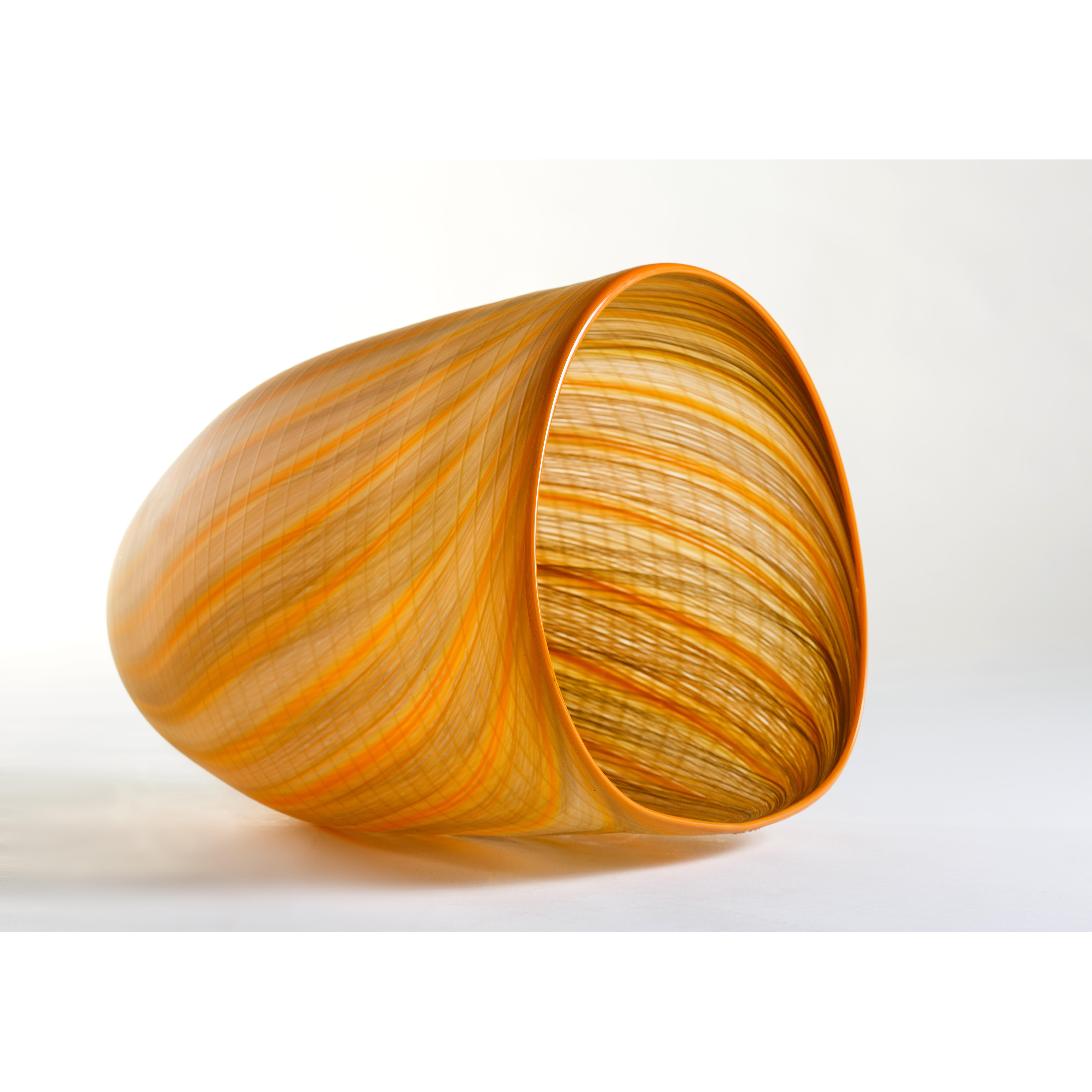 Museum MinuteYellow Rushes Fish Basket by Jenni Kemarre MartinielloFreshwater Saltwater Weave is a series of glass works by contemporary urban-based Arrernte artist Jenni Kemarre Martiniello. Her works in hot blown glass, coldworked glass and canes are inspired by the aesthetics of Aboriginal woven forms. The works in this exhibition span the last five years and are inspired by dilly bags, eel traps, fish traps, fish baskets, and bicornual baskets.
Yellow Rushes Fish Basket
2017
Jenni Kemarre Martiniello
Hot blown and cold worked glass with canes
Purchased with funds provided by Maria T. Kluge, 2019.2020-10-2202 min
Museum MinuteYellow Rushes Fish Basket by Jenni Kemarre MartinielloFreshwater Saltwater Weave is a series of glass works by contemporary urban-based Arrernte artist Jenni Kemarre Martiniello. Her works in hot blown glass, coldworked glass and canes are inspired by the aesthetics of Aboriginal woven forms. The works in this exhibition span the last five years and are inspired by dilly bags, eel traps, fish traps, fish baskets, and bicornual baskets.
Yellow Rushes Fish Basket
2017
Jenni Kemarre Martiniello
Hot blown and cold worked glass with canes
Purchased with funds provided by Maria T. Kluge, 2019.2020-10-2202 min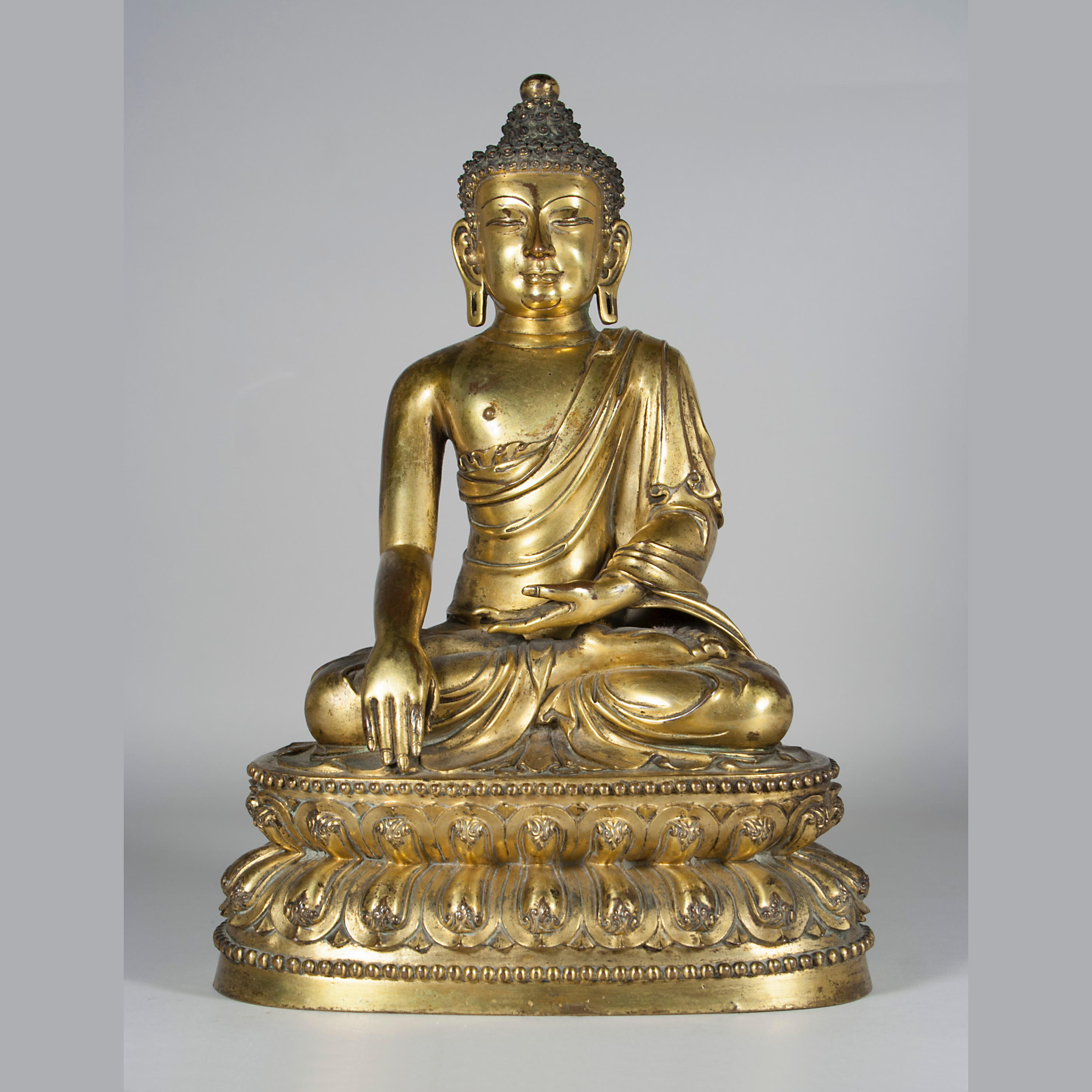 Museum MinuteShakyamuni in Bronze from the Xuande PeriodDo you need a little tranquility and peace in your life? Join Matthew McLendon as he looks at a beautiful bronze in The Fralin Museum of Art’s collection depicting Shakyamuni, the historical Buddha. Though only 11 inches tall, this work from Ming Dynasty China is exquisitely detailed with a psychological force well beyond its size.Chinese Artist Shakyamuni Xuande Period 1426 - 1435 Gilt bronze 11 x 7 1/4 x 5 in. (27.9 x 18.4 x 12.7 cm) Bequest of Frank Haden Vines 1976.31.62020-10-2201 min
Museum MinuteShakyamuni in Bronze from the Xuande PeriodDo you need a little tranquility and peace in your life? Join Matthew McLendon as he looks at a beautiful bronze in The Fralin Museum of Art’s collection depicting Shakyamuni, the historical Buddha. Though only 11 inches tall, this work from Ming Dynasty China is exquisitely detailed with a psychological force well beyond its size.Chinese Artist Shakyamuni Xuande Period 1426 - 1435 Gilt bronze 11 x 7 1/4 x 5 in. (27.9 x 18.4 x 12.7 cm) Bequest of Frank Haden Vines 1976.31.62020-10-2201 min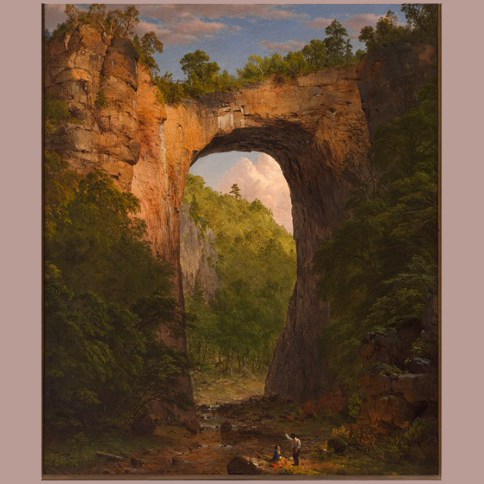 Museum MinuteThe Natural Bridge by Frederic Edwin ChurchPerhaps the most famous and well-traveled painting in the museum’s collection, The Natural Bridge by Frederic Edwin Church, is for any Virginian an immediately recognizable scene. Church painted this picture in 1852 based on sketches he made on a trip to Natural Bridge the previous summer with friends Cyrus and Mary Field. Church took precise notes on his sketches of the geological formations as well as the surrounding flora and there is an oft repeated anecdote that Cyrus Field kept a rock fragment from the trip and compared it to the painting for accuracy.Frederic Edwin Church Am...2020-09-2802 min
Museum MinuteThe Natural Bridge by Frederic Edwin ChurchPerhaps the most famous and well-traveled painting in the museum’s collection, The Natural Bridge by Frederic Edwin Church, is for any Virginian an immediately recognizable scene. Church painted this picture in 1852 based on sketches he made on a trip to Natural Bridge the previous summer with friends Cyrus and Mary Field. Church took precise notes on his sketches of the geological formations as well as the surrounding flora and there is an oft repeated anecdote that Cyrus Field kept a rock fragment from the trip and compared it to the painting for accuracy.Frederic Edwin Church Am...2020-09-2802 min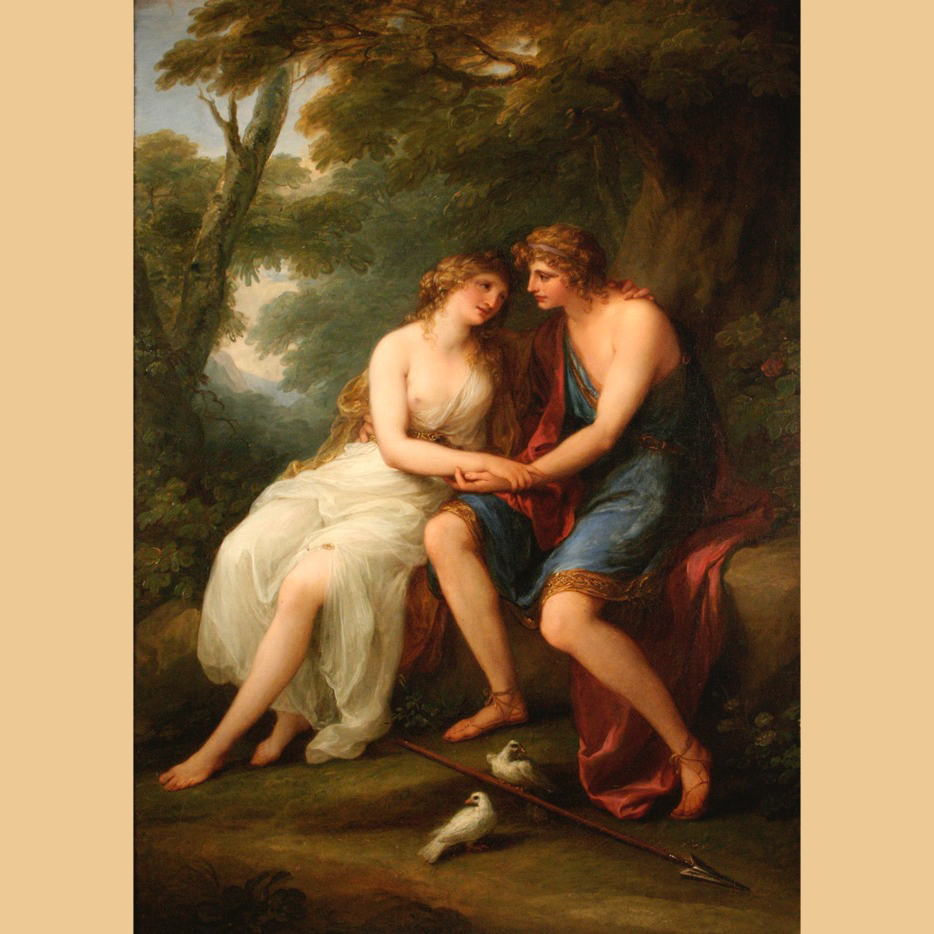 Museum MinuteVenus and Adonis by Angelica KauffmannAngelica Kauffmann (Swiss, 1741-1807) was famed throughout England and Europe as a portraitist and painter of Neoclassical scenes. She came to notice in her teens, having traveled and trained with her father, the painter Johann Joseph Kauffman. After moving from Rome to London, she was one of only two women who were founding members of the Royal Academy. In Venus and Adonis, 1786, Kauffmann portrays a moment of quiet intimacy between the goddess and the youth. The tragedy of the story has yet to unfold and seems unimaginable in such an idyllic setting.Angelica Kauffmann Swiss, 1741-1807 Venus...2020-09-1502 min
Museum MinuteVenus and Adonis by Angelica KauffmannAngelica Kauffmann (Swiss, 1741-1807) was famed throughout England and Europe as a portraitist and painter of Neoclassical scenes. She came to notice in her teens, having traveled and trained with her father, the painter Johann Joseph Kauffman. After moving from Rome to London, she was one of only two women who were founding members of the Royal Academy. In Venus and Adonis, 1786, Kauffmann portrays a moment of quiet intimacy between the goddess and the youth. The tragedy of the story has yet to unfold and seems unimaginable in such an idyllic setting.Angelica Kauffmann Swiss, 1741-1807 Venus...2020-09-1502 min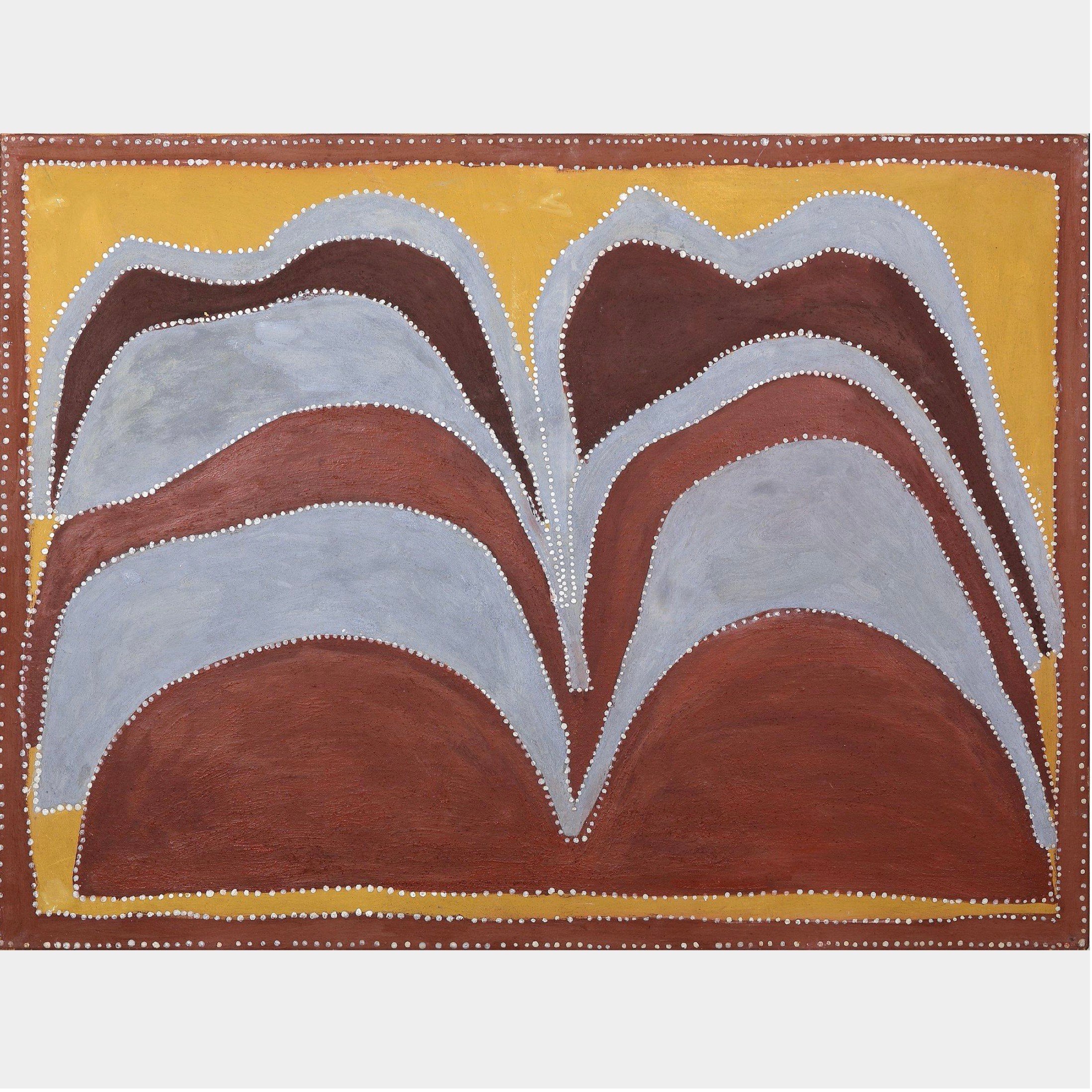 Museum MinuteJack Kelly's Rockhole by Queenie McKenzieJack Kelly's Rockhole
1997
90 x 120 cm
Queenie McKenzie, indigenous Australian, b. 1915
Natural pigments on canvas
Kluge-Ruhe Aboriginal Art Collection of the University of Virginia.
Gift of Richard Klingler and Jane Slatter, 2019.2020-09-0902 min
Museum MinuteJack Kelly's Rockhole by Queenie McKenzieJack Kelly's Rockhole
1997
90 x 120 cm
Queenie McKenzie, indigenous Australian, b. 1915
Natural pigments on canvas
Kluge-Ruhe Aboriginal Art Collection of the University of Virginia.
Gift of Richard Klingler and Jane Slatter, 2019.2020-09-0902 min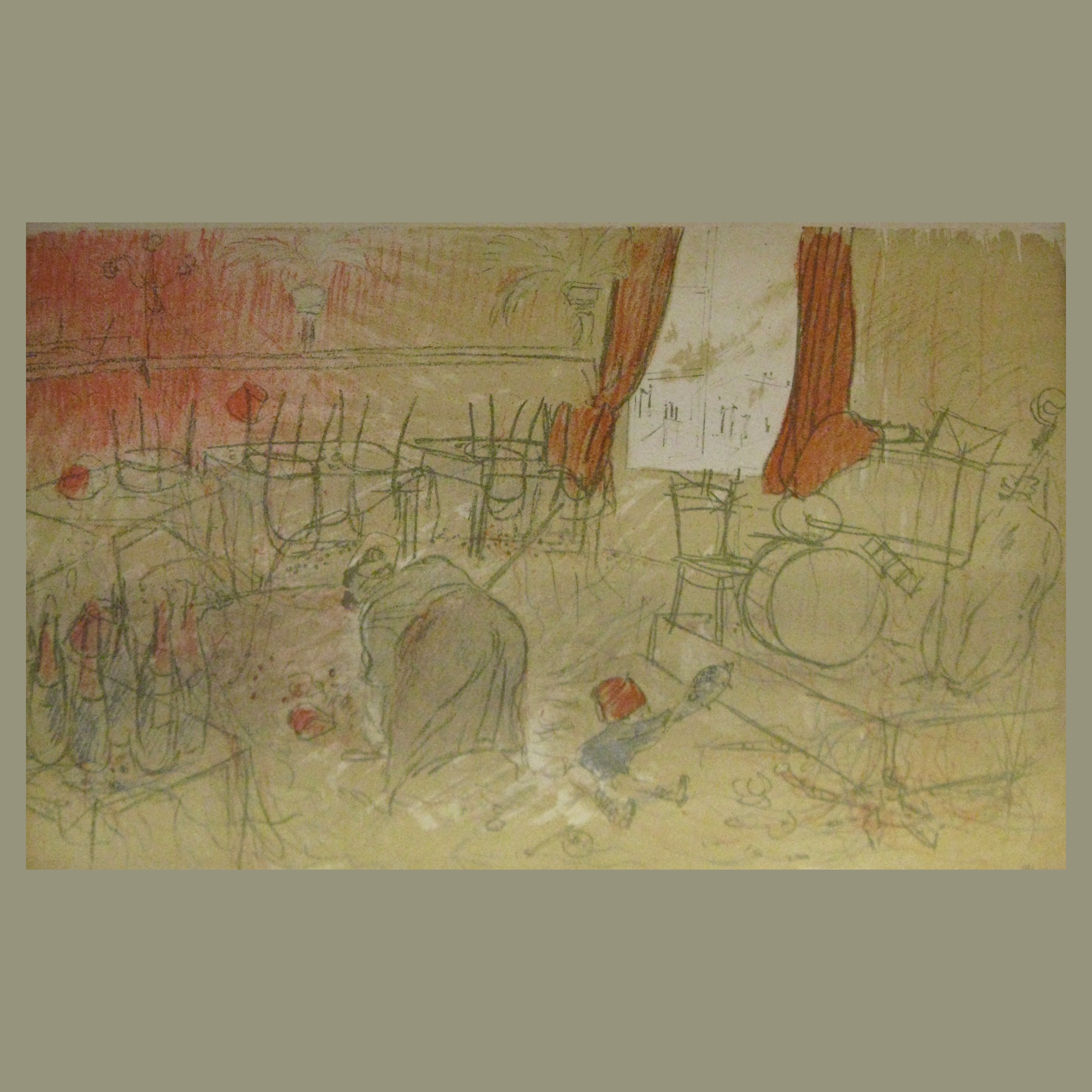 Museum MinuteDancing by Marcel VertèsMarcel Vertès (1895-1961) moved to Paris during World War I. While living in the Latin Quarter, he distinguished himself as a printmaker, illustrator, and painter, depicting the café culture that surrounded him. Following World War II, he immigrated to the United States where he worked on the 1952 Hollywood film Moulin Rouge, winning two Oscars for best art direction and best costume design. His murals, which he finished before returning to Paris, can still be viewed in the famed Café Carlyle in New York City.Marcel Vertèsb. Hungary, 1895-1961, active in FranceUn...2020-08-2702 min
Museum MinuteDancing by Marcel VertèsMarcel Vertès (1895-1961) moved to Paris during World War I. While living in the Latin Quarter, he distinguished himself as a printmaker, illustrator, and painter, depicting the café culture that surrounded him. Following World War II, he immigrated to the United States where he worked on the 1952 Hollywood film Moulin Rouge, winning two Oscars for best art direction and best costume design. His murals, which he finished before returning to Paris, can still be viewed in the famed Café Carlyle in New York City.Marcel Vertèsb. Hungary, 1895-1961, active in FranceUn...2020-08-2702 min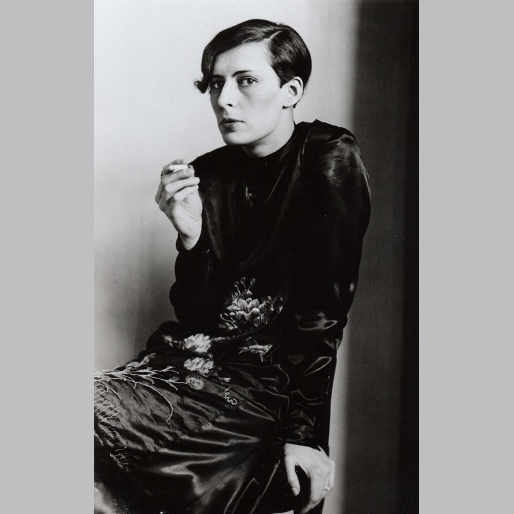 Museum MinuteThe Secretary by August SanderThe German photographer, August Sander (1876-1964), was best known for creating what the Museum of Modern Art, New York has called, “the most ambitious and influential portrait of the people of the 20th century.” His sweeping photographic project, People of the 20th Century (Menschen des 20. Jahrhunderts), is comprised of over 600 photographs divided into seven volumes and nearly 50 portfolios intending to be a comprehensive visual record of the German people. He devoted 40 years of his life to it.August SanderGerman, 1876-1964The Secretary, West German Radio, Cologne, 1931 Gelatin silver print, 10 5/16 x 6 1/2 in.Mu...2020-08-2002 min
Museum MinuteThe Secretary by August SanderThe German photographer, August Sander (1876-1964), was best known for creating what the Museum of Modern Art, New York has called, “the most ambitious and influential portrait of the people of the 20th century.” His sweeping photographic project, People of the 20th Century (Menschen des 20. Jahrhunderts), is comprised of over 600 photographs divided into seven volumes and nearly 50 portfolios intending to be a comprehensive visual record of the German people. He devoted 40 years of his life to it.August SanderGerman, 1876-1964The Secretary, West German Radio, Cologne, 1931 Gelatin silver print, 10 5/16 x 6 1/2 in.Mu...2020-08-2002 min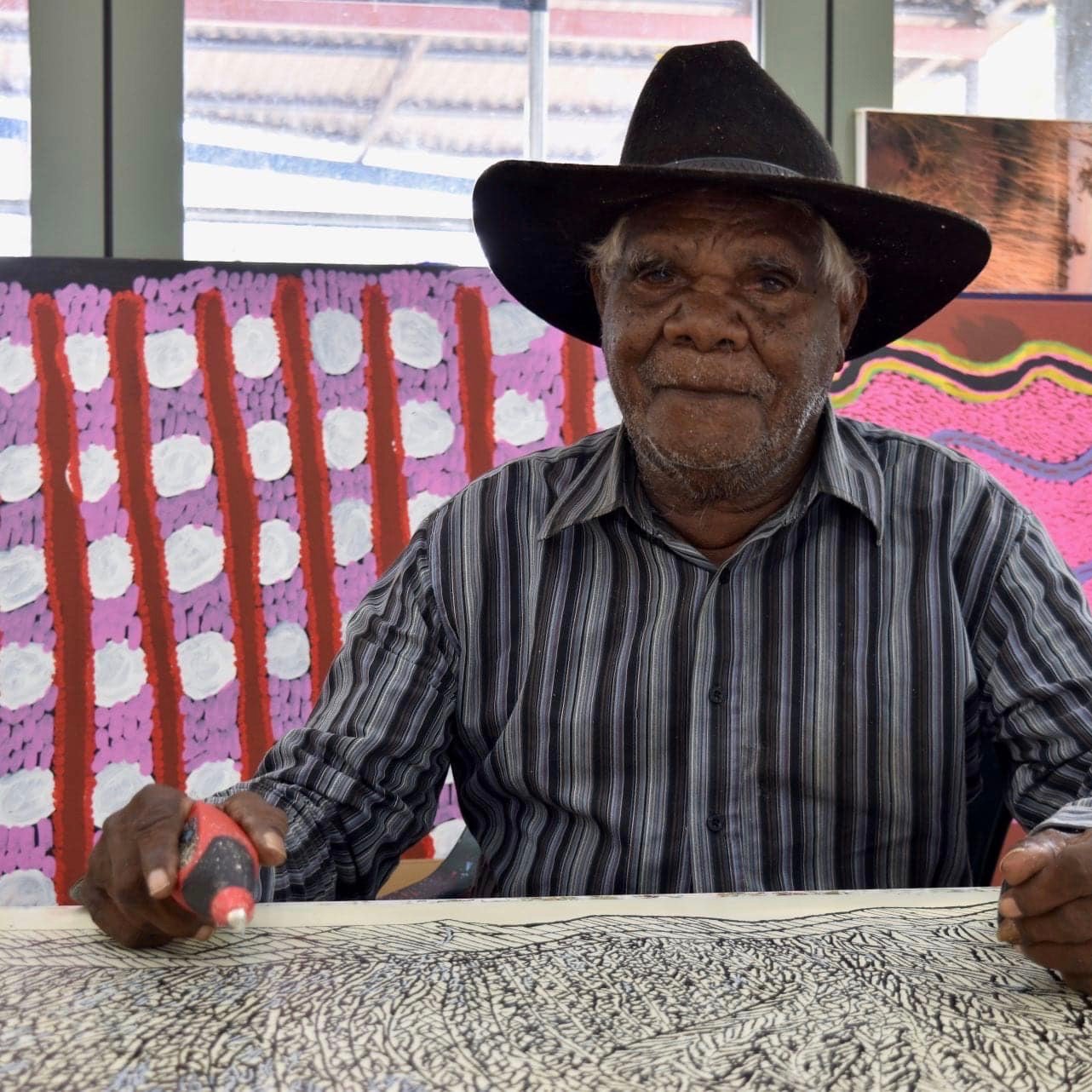 Museum MinuteNgarralja Tommy MayNgarralja Tommy May has been making art for over 30 years and this year his painting, Wirrkanja, won the National Aboriginal and Torres Strait Islander Art Award. Henry Skerritt introduces us to the artist and reminisces about his 2016 visit to the Kluge-Ruhe.2020-08-1302 min
Museum MinuteNgarralja Tommy MayNgarralja Tommy May has been making art for over 30 years and this year his painting, Wirrkanja, won the National Aboriginal and Torres Strait Islander Art Award. Henry Skerritt introduces us to the artist and reminisces about his 2016 visit to the Kluge-Ruhe.2020-08-1302 min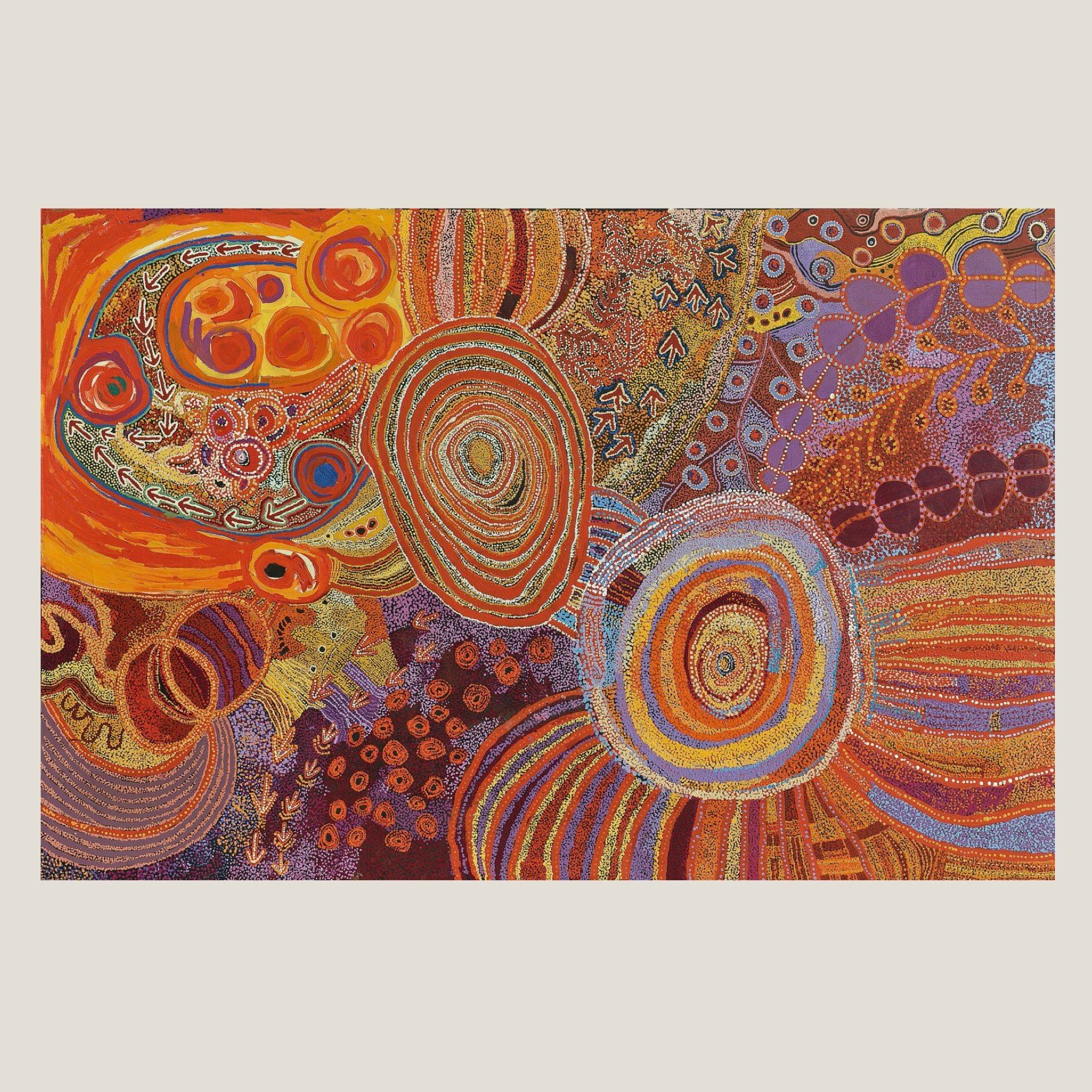 Museum MinuteNganampa Ngura, Our Country By Tjala ArtsNganampa Ngura, Our Country (2013) is a work of grand ambition and stunning color, it shows the ways in which these senior women see the world, connected by kin and country. From the tiny flowers of the bush plum to an epic painting on canvas, all actions are interrelated. In our globally connected world, these artworks remind us that every “little thing” is part of the grand tapestry of existence. The thirteen artists who made this work are: Wawiriya Burton, Ruby Williamson, Barbara Moore, Mary Katajuka Pan, Nyurpaya Kaika Burton, Naomi Kantjuriny, Iluwanti Ken, Mona Mitakiki Shepard, Tjungkara Ken, Sylvia Ken, Kata...2020-08-1302 min
Museum MinuteNganampa Ngura, Our Country By Tjala ArtsNganampa Ngura, Our Country (2013) is a work of grand ambition and stunning color, it shows the ways in which these senior women see the world, connected by kin and country. From the tiny flowers of the bush plum to an epic painting on canvas, all actions are interrelated. In our globally connected world, these artworks remind us that every “little thing” is part of the grand tapestry of existence. The thirteen artists who made this work are: Wawiriya Burton, Ruby Williamson, Barbara Moore, Mary Katajuka Pan, Nyurpaya Kaika Burton, Naomi Kantjuriny, Iluwanti Ken, Mona Mitakiki Shepard, Tjungkara Ken, Sylvia Ken, Kata...2020-08-1302 min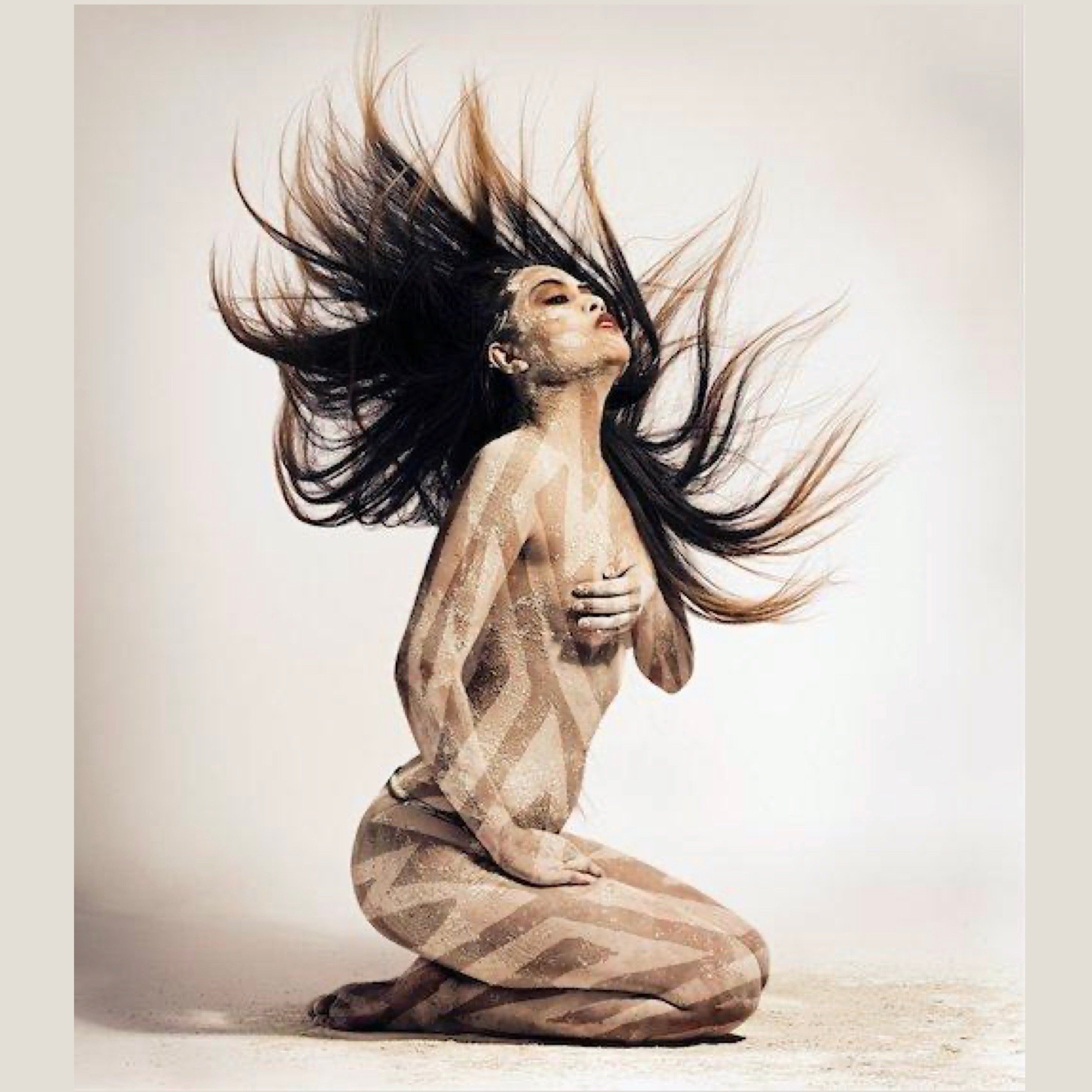 Museum MinuteKaa by Cara RomeroSee the photograph on the Fralin's website.Cara Romero (Chemehuevi) is an award-winning artist who utilizes techniques learned in film, digital, fine art, and commercial photography to produce powerful visual imagery that serves both as social commentary and to bring focus on Indigenous female perspectives. She painstakingly constructs narrative scenes that use pop cultural references to visually critique common stereotypes of Native women and to tell contemporary stories of Native identity. Romero is represented in many museum collections and has been included in national and international exhibitions, including the recent Hearts of Our People: Native...2020-08-1302 min
Museum MinuteKaa by Cara RomeroSee the photograph on the Fralin's website.Cara Romero (Chemehuevi) is an award-winning artist who utilizes techniques learned in film, digital, fine art, and commercial photography to produce powerful visual imagery that serves both as social commentary and to bring focus on Indigenous female perspectives. She painstakingly constructs narrative scenes that use pop cultural references to visually critique common stereotypes of Native women and to tell contemporary stories of Native identity. Romero is represented in many museum collections and has been included in national and international exhibitions, including the recent Hearts of Our People: Native...2020-08-1302 min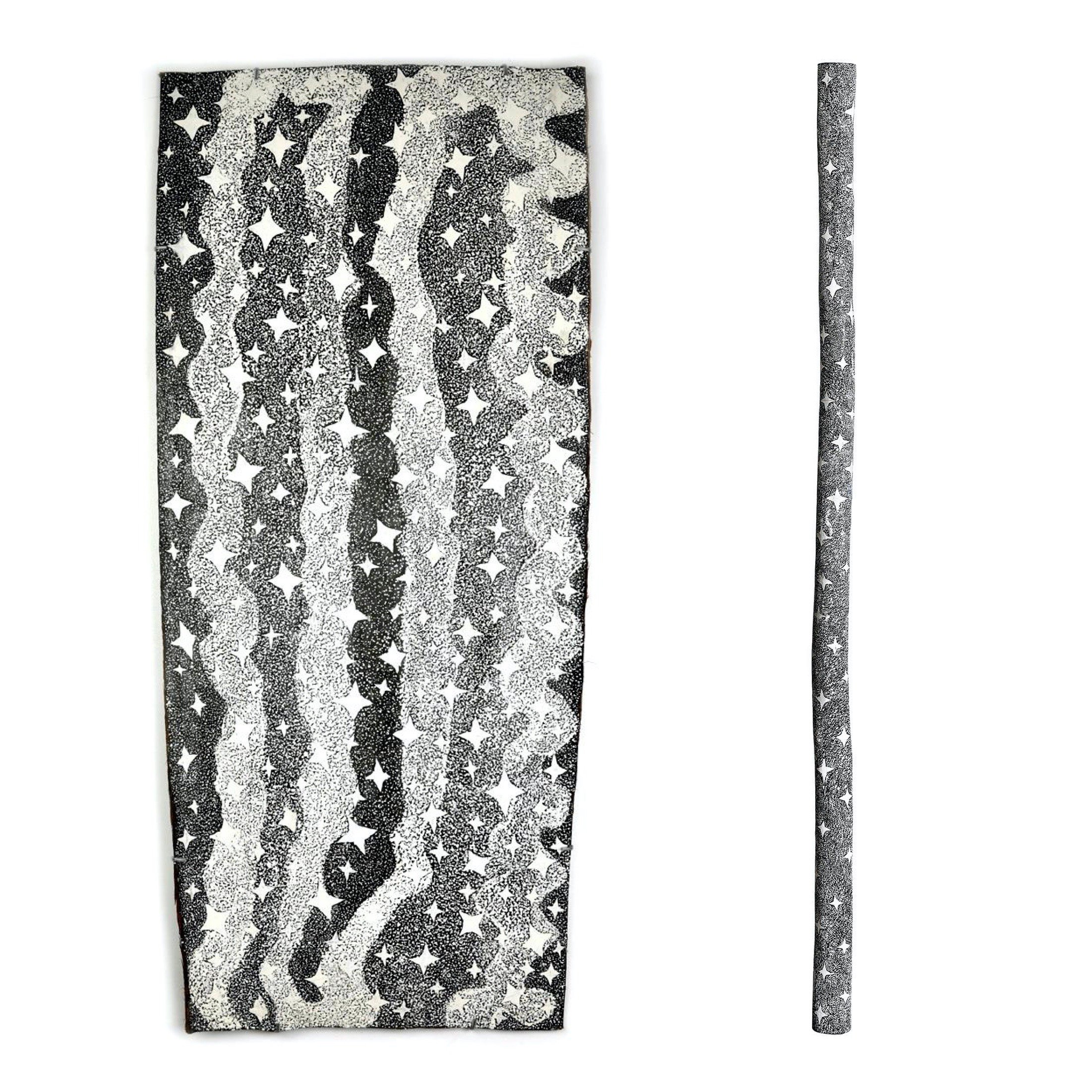 Museum MinuteMilniyawuy - River of Stars by Naminapu Maymuru-WhiteNaminapu Maymuru-White is a Mangalili artist who paints the Milky Way and its earthly mirror, the Milniyawuy River.2020-08-1302 min
Museum MinuteMilniyawuy - River of Stars by Naminapu Maymuru-WhiteNaminapu Maymuru-White is a Mangalili artist who paints the Milky Way and its earthly mirror, the Milniyawuy River.2020-08-1302 min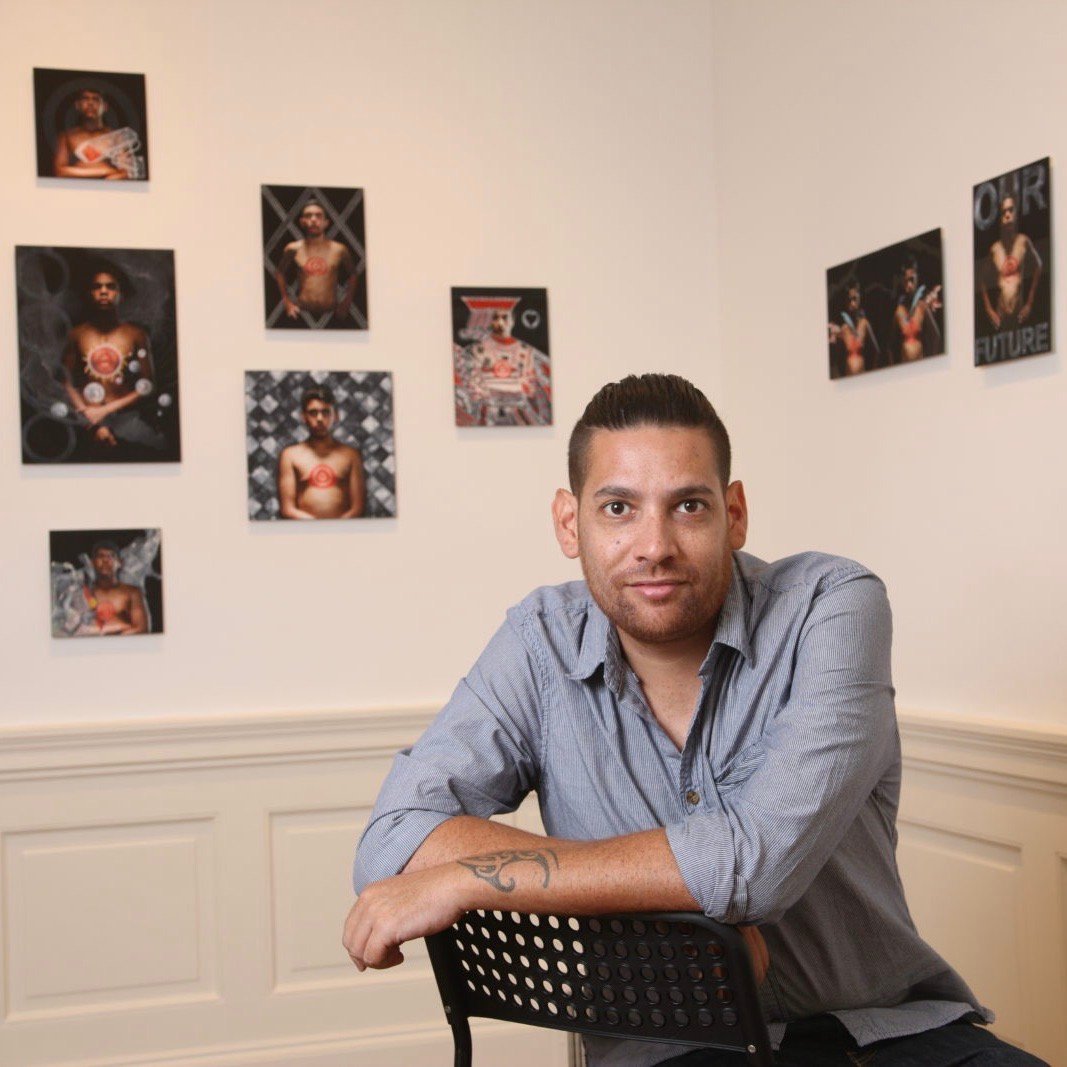 Museum MinuteBrothers Moving Targets by Tony AlbertTony Albert’s Brothers Moving Targets engages with issues of race, police violence, discrimination and identity. This single installation features twenty-six portraits of young Aboriginal men with targets painted onto their chests, as well as designs and symbols that Albert associates with strength and resistance. Albert was inspired by events that took place in Sydney in 2012, when two teenage Aboriginal joyriders were shot and injured at the hands of police. Following this, a protest was held at Sydney’s Town Hall, and friends of the victims appeared with targets drawn on their chests. For Albert, the target symbolizes the dail...2020-08-1302 min
Museum MinuteBrothers Moving Targets by Tony AlbertTony Albert’s Brothers Moving Targets engages with issues of race, police violence, discrimination and identity. This single installation features twenty-six portraits of young Aboriginal men with targets painted onto their chests, as well as designs and symbols that Albert associates with strength and resistance. Albert was inspired by events that took place in Sydney in 2012, when two teenage Aboriginal joyriders were shot and injured at the hands of police. Following this, a protest was held at Sydney’s Town Hall, and friends of the victims appeared with targets drawn on their chests. For Albert, the target symbolizes the dail...2020-08-1302 min